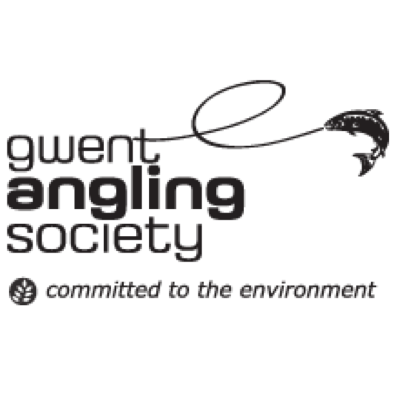
CAUTION: Angling, variously considered the gentle art and the contemplative mans past time is also a deceptively hazardous recreation. In consequence of the activity being practised in the proximity to deep and running waters in all weathers, often in remote places, and with the use of sharp implements, dangerous situations can arise suddenly and from unexpected quarters
Defence against hazards deriving from these factors forms the basis for a safety policy in these guidelines.
Angling as a pursuit is divided into several disciplines: coarse, sea and game. Game angling subdivides into Stillwater and River angling, but at the present time River angling is the only area of activity with which Gwent Angling Society is concerned in these guidelines.
These guidelines are intended as common sense precautions to be applied by persons engaged in river game angling activity both as participants and in a supervisory capacity. The inherent dangers are regarded by the society as self evident to any sensible and right minded person and, barring circumstances beyond human control, it is considered that understanding and observation of the guidelines, together with cognisance of government legislation and local bylaws, should confine the risk of accident, mishap or injury to minimum.
Accordingly, and in addition to implementation of this policy, the following legislation must also be taken into account and applied in all the societys angling activity:
Health and Safety regulations
Countryside code
Local fishery bylaws
Wildlife and Countryside Act (1984 amended)
Children and Young Persons Act
RIVER ANGLING SAFETY
Before Setting Out
Safety begins at home
Ensure that someone knows where you are intending to fish, and when approximately to expect you home.
Before leaving you need to be certain that you are equipped with items that ensure your unimpeded pleasure and safety. Devise a check list along the following lines:
Rod license
Permit
Money
Medication (if appropriate)
Food & drink
Spectacles (reading/sun/safety glasses)
Binoculars (optional)
Batteries (Charge mobile phone/ torch batteries. Carry spares for night fishing/ going home/ emergency)
Bulb (ALWAYS carry a spare for torch)
First Aid kit
Clothing
Equip yourself accordingly to the likely conditions (usually colder and usually different to front door weather). Always put a change of clothing in your car and carry a towel- it is surprising how often you will need it!!
Flotation jacket and whistle
Pullover
Socks (and spares)
Gloves
Waterproof jacket/ trousers/ hat
Fishing waistcoat
Hat/ cap/hood
Waders- suitably checked for waterproofing. Remember wading boots and socks if necessary. Felt soles or studs best for rocky terrain.
Wader repair kit (just in case of emergency)
Handkerchief/ tissues
Tackle
Never assume you have everything you need in place for the last outing. Consider in advance projected location and changed conditions. Check tackle in light.
Wading staff
Torch
Rod(s)
Reel(s)
Lines (plus spares)
Net
Fishing bag/ creel
Fly boxes/ wallets
Floatant
Bait boxes/ containers
Casts/ leaders
Maps/ fishery plans
Insect repellent
Tools
Scissors
Forceps
Pliers
Priest
Knife
Screwdriver
Tape
Glue
Small saw and secateurs
Reel oil/ grease
Light rope or cord
Thermometer
Scales
Camera
Pen & paper
Mobile Phone
GENERAL CONDUCT
Personal Attitude
Go fishing for pleasure, to unwind, relax and enjoy the countryside.
Be courteous and show consideration to others. Some fellow anglers like solitude; always respect that right.
Observe the countryside code. Leave things as you find them- close gates; use stiles; do not leave litter or throw it in the water; do not break branches or tread down waterside plants. Do not light fires or bring dogs with you or children you cannot control.
Respect wildlife. Be sensitive to nesting birds and animals with young. If there are wild crops in a field (e.g. wild mushrooms or hazelnuts) do not pick them all.
PROCEDURE
The Car
Park your car safely and with consideration, where it does not cause obstruction to others- farmers, pedestrians or other anglers.
Avoid parking in a field where there are cattle.
Lock all valuable in the boot or out of sight.
Secure all tackle to your person. Check bag and pocket(s) securely closed/ zipped. Clip accessories to belt or/and pin to fishing jacket or waistcoat. Check on roof and around car for items before moving off
Walking
Follow (marked) paths and use gates and stiles. Do not walk across standing crops.
Avoid climbing fences or gates.
Wooden stiles and plank bridges can be treacherous. Tack chicken wire to slippery surfaces where appropriate and allowed.
Exercise great care negotiating barbed wire fences, especially in waders. Use oiled jacket or split hosepipe or such like for protection.
When walking to and from the water with rod assembled, carry it reel forward. Beware of low branches and low bridges.
Look out for overhead power lines when walking with assembled rod and when casting.
Be on the lookout for hostile bulls, newly calved cows and other potentially dangerous animals. Bullocks can be more than inquisitive, and can damage tackle left on the bank.
Do not walk closer than 1 metre to the edge of a high river bank on an alluvial plain.
Wading
Always use, or improvise, a wading staff when wading.
All anglers but, especially non-swimmers, should wear a life jacket when fishing.
Be extremely cautious when wading unfamiliar waters. Be methodical, only proceed form one secure position to another that you have surveyed- and tested with a wading staff. Look carefully for sudden shelves, slippery surfaces, sharp objects, obstructions (e.g. rocks, tree roots, submerged logs, etc.) Beware of soft gravel or mud and swift currents.
Never wade unfamiliar waters in turbulent conditions or coloured water.
In any potentially hazardous locations (e.g. slippery rock, mud, strong currents, loose gravel etc.) if you must wade use a guy rope to anchor you to an object on the shore capable of withstanding more than your weight.
Estuaries are especially hazardous. Never wade alone, or without expert local knowledge.
At night, never wade without a thorough daylight recce. In any case use a torch when crossing the river (it need not disturb fish). Keep in systematic touch with any companion.
If the water is noticeably cold or you are getting wet, do not remain in the water for longer than 15 minutes before remedying the situation.
Be observant of the water level when you cross a river, especially in tidal reaches or in areas where there is a propensity to flash flooding, or below an abstraction point or where hydro-power generation is in progress.
Casting
Wear safety glasses especially in windy conditions, when fishing deep and when using heavy flies or lures.
At night always wear safety glasses.
Make an assessment of tree cover and foot path proximity on your back cast. Always be mind full of other anglers and of unsuspecting members of the public approaching behind without warning. Likewise animals.
Do not cast in the vicinity of overhead power cables.
It is never worth the value of a fly or lure to risk breaking a limb or worse in an attempt to retrieve it from a tree or other such obstruction. If you must, seek help, permission and the appropriate equipment/ tools.
Final Consideration
It is the responsibility of the individual angler to make an assessment of the conditions of the water/weather prior to and when they are fishing and not to take any unnecessary risk in any circumstance.


